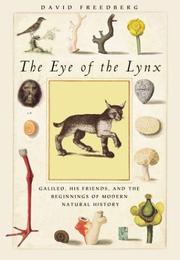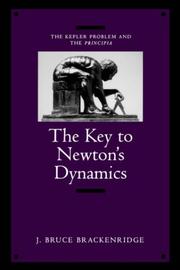| Listing 1 - 10 of 23 | << page >> |
Sort by
|
Book
ISBN: 1644696193 1644696185 1644696177 Year: 2021 Publisher: Boston, MA : Academic Studies Press,
Abstract | Keywords | Export | Availability | Bookmark
 Loading...
Loading...Choose an application
- Reference Manager
- EndNote
- RefWorks (Direct export to RefWorks)
This previously unpublished chronicle contains valuable information on the Crimean Khanate and its relations with the Ottoman state between 1680-1730, as well as on other events in this important period. It was originally written by a local Jewish rabbi in Semi-Biblical Hebrew and was translated from the extant manuscripts.
Jews --- History --- Turkey --- Crimean Khanate --- History. --- 1600s. --- 1700s. --- Circassia. --- Cossacks. --- Crimea. --- Crimean Tatars. --- Great Turkish Wars. --- Historiography. --- Jewish. --- Judaism. --- Khanate. --- Mizrahi Jews. --- Northern War. --- Ottoman Empire. --- Persia. --- Russic. --- Sephardic. --- Tatar. --- Tulip Era. --- Ukrainian History. --- politics.

ISBN: 1282504193 9786612504198 0226261530 9780226261539 9780226261485 0226261484 9780226261478 0226261476 0226261484 Year: 2002 Publisher: Chicago : University of Chicago Press,
Abstract | Keywords | Export | Availability | Bookmark
 Loading...
Loading...Choose an application
- Reference Manager
- EndNote
- RefWorks (Direct export to RefWorks)
Some years ago, David Freedberg opened a dusty cupboard at Windsor Castle and discovered hundreds of vividly colored, masterfully precise drawings of all sorts of plants and animals from the Old and New Worlds. Coming upon thousands more drawings like them across Europe, Freedberg finally traced them all back to a little-known scientific organization from seventeenth-century Italy called the Academy of Linceans (or Lynxes). Founded by Prince Federico Cesi in 1603, the Linceans took as their task nothing less than the documentation and classification of all of nature in pictorial form. In this first book-length study of the Linceans to appear in English, Freedberg focuses especially on their unprecedented use of drawings based on microscopic observation and other new techniques of visualization. Where previous thinkers had classified objects based mainly on similarities of external appearance, the Linceans instead turned increasingly to sectioning, dissection, and observation of internal structures. They applied their new research techniques to an incredible variety of subjects, from the objects in the heavens studied by their most famous (and infamous) member Galileo Galilei-whom they supported at the most critical moments of his career-to the flora and fauna of Mexico, bees, fossils, and the reproduction of plants and fungi. But by demonstrating the inadequacy of surface structures for ordering the world, the Linceans unwittingly planted the seeds for the demise of their own favorite method-visual description-as a mode of scientific classification. Profusely illustrated and engagingly written, Eye of the Lynx uncovers a crucial episode in the development of visual representation and natural history. And perhaps as important, it offers readers a dazzling array of early modern drawings, from magnificently depicted birds and flowers to frogs in amber, monstrously misshapen citrus fruits, and more.
Science --- History. --- Accademia nazionale dei Lincei --- galileo, philosopher, philosophical, astronomy, astronomer, natural, nature, history, historical, academic, scholarly, research, colleagues, drawings, artistic, illustrations, science, scientific, europe, italy, academy, 1600s, pictorial, microscopic, observation, detail, flora, fauna, bees, plants, reproduction, interdisciplinary, pictures.
Book
ISBN: 9781644533031 Year: 2023 Publisher: Newark, DE : University of Delaware Press,
Abstract | Keywords | Export | Availability | Bookmark
 Loading...
Loading...Choose an application
- Reference Manager
- EndNote
- RefWorks (Direct export to RefWorks)
"Ordering Customs explores how Renaissance Venetians sought to make sense of human difference in a period characterized by increasing global contact and a rapid acceleration of the circulation of information. Venice was at the center of both these developments. The book traces the emergence of a distinctive tradition of ethnographic writing that served as the basis for defining religious and cultural difference in new ways. Taylor draws on a trove of unpublished sources-diplomatic correspondence, court records, diaries, and inventories-to show that the study of customs, rituals, and ways of life not only became central in how Venetians sought to apprehend other peoples, but also had a very real impact at the level of policy, shaping how the Venetian state governed minority populations in the city and its empire. In contrast with the familiar image of ethnography as the product of overseas imperial and missionary encounters, the book points to a more complicated set of origins"--
Ethnology --- Ambassadors --- History. --- Venice (Italy) --- Ethnic relations --- History --- Foreign relations --- Politics and government --- history, venice, renaissance, italy, culture, ethnicity, ethnographic writing, 16th century, 17th century, sixteenth century, seventeenth century, 1500s, 1600s, customs, rituals.
Book
ISBN: 1280126418 9786613530271 0226753662 9780226753669 9781280126413 9780226753645 0226753646 Year: 2012 Publisher: Chicago : University of Chicago Press,
Abstract | Keywords | Export | Availability | Bookmark
 Loading...
Loading...Choose an application
- Reference Manager
- EndNote
- RefWorks (Direct export to RefWorks)
The first general history of Korea as seen through maps, Korea: A Cartographic History provides a beautifully illustrated introduction to how Korea was and is represented cartographically. John Rennie Short, one of today's most prolific and well-respected geographers, encapsulates six hundred years of maps made by Koreans and non-Koreans alike. Largely chronological in its organization, Korea begins by examining the differing cartographic traditions prevalent in the early Joseon period in Korea-roughly 1400 to 1600-and its temporal equivalent in early modern Europe. As one of the longest continuous dynasties, Joseon rule encompassed an enormous range and depth of cartographic production. Short then surveys the cartographic encounters from 1600 to 1900, distinguishing between the early and late Joseon periods and highlighting the influences of China, Japan, and the rest of the world on Korean cartography. In his final section, Short covers the period from Japanese colonial control of Korea to the present day and demonstrates how some of the tumultuous events of the past hundred years are recorded and contested in maps. He also explores recent cartographic controversies, including the naming of the East Sea/Sea of Japan and claims of ownership of the island of Dokdo. A common theme running throughout Short's study is how the global flow of knowledge and ideas affects mapmaking, and Short reveals how Korean mapmakers throughout history have embodied, reflected, and even contested these foreign depictions of their homeland.
Cartography --- Cartography, Primitive --- Chartography --- Map-making --- Mapmaking --- Mapping (Cartography) --- Mathematical geography --- Surveying --- Map projection --- Maps --- History. --- asia, asian, east, eastern, cartography, maps, map making, mapmaker, history, historical, academic, scholarly, research, public policy, illustrated, introduction, geography, geographical, topography, chronological, cartographic, period, joseon, 1400s, 1500s, 1600s, 1700s, 1800s, 1900s, controversy, sea, japan, dokdo, modern, contemporary, colonial, country.
Book
Year: 2015 Publisher: Chicago : University of Chicago Press,
Abstract | Keywords | Export | Availability | Bookmark
 Loading...
Loading...Choose an application
- Reference Manager
- EndNote
- RefWorks (Direct export to RefWorks)
In Capitalism and Cartography in the Dutch Golden Age, Elizabeth A. Sutton explores the fascinating but previously neglected history of corporate cartography during the Dutch Golden Age, from ca. 1600 to 1650. She examines how maps were used as propaganda tools for the Dutch West India Company in order to encourage the commodification of land and an overall capitalist agenda. Building her exploration around the central figure of Claes Jansz Vischer, an Amsterdam-based publisher closely tied to the Dutch West India Company, Sutton shows how printed maps of Dutch Atlantic territories helped rationalize the Dutch Republic's global expansion. Maps of land reclamation projects in the Netherlands, as well as the Dutch territories of New Netherland (now New York) and New Holland (Dutch Brazil), reveal how print media were used both to increase investment and to project a common narrative of national unity. Maps of this era showed those boundaries, commodities, and topographical details that publishers and the Dutch West India Company merchants and governing Dutch elite deemed significant to their agenda. In the process, Sutton argues, they perpetuated and promoted modern state capitalism.
Cartography --- Cartography --- Capitalism --- History --- Economic aspects --- History --- Netherlands --- Colonies --- capitalist, cartographer, maps, mapmaking, time period, era, analysis, academic, scholarly, research, critical, critique, analyzed, history, historical, europe, european, corporate, 1600s, propaganda, west india company, global, expansion, international, republic, colonial, colonialism, territory, america, american, netherland, holland, new york, national, commonwealth.

ISBN: 1282659898 9786612659898 0226757528 9780226757520 0226757536 9780226757537 0226757544 9780226757544 9781282659896 6612659890 Year: 2001 Publisher: Chicago : University of Chicago Press,
Abstract | Keywords | Export | Availability | Bookmark
 Loading...
Loading...Choose an application
- Reference Manager
- EndNote
- RefWorks (Direct export to RefWorks)
At one time in Europe, there was a point to pain: physical suffering could be a path to redemption. This religious notion suggested that truth was lodged in the body and could be achieved through torture. In Tortured Subjects, Lisa Silverman tells the haunting story of how this idea became a fixed part of the French legal system during the early modern period. Looking closely at the theory and practice of judicial torture in France from 1600 to 1788, the year in which it was formally abolished, Silverman revisits dossiers compiled in criminal cases, including transcripts of interrogations conducted under torture, as well as the writings of physicians and surgeons concerned with the problem of pain, records of religious confraternities, diaries and letters of witnesses to public executions, and the writings of torture's abolitionists and apologists. She contends that torture was at the center of an epistemological crisis that forced French jurists and intellectuals to reconsider the relationship between coercion and sincerity, or between free will and evidence. As the philosophical consensus on which torture rested broke down, and definitions of truth and pain shifted, so too did the foundation of torture, until by the eighteenth century, it became an indefensible practice.
Torture --- Criminal justice, Administration of --- History. --- early modern, time period, era, france, french, europe, european, body, history, historical, academic, scholarly, research, suffering, pain, physical, redemption, religion, trauma, theory, theoretical, true story, torture, 1600s, 1700s, 18th century, illegal, crime, criminal, transcript, interrogation, physician, surgeon, witness, execution, apologist, abolitionist, activist.
Book
ISBN: 022608079X 9780226080796 1306269857 9781306269858 9780226080659 022608065X Year: 2014 Publisher: Chicago London
Abstract | Keywords | Export | Availability | Bookmark
 Loading...
Loading...Choose an application
- Reference Manager
- EndNote
- RefWorks (Direct export to RefWorks)
If one had looked for a potential global city in Europe in the 1540s, the most likely candidate would have been Antwerp, which had emerged as the center of the German and Spanish silver exchange as well as the Portuguese spice and Spanish sugar trades. It almost certainly would not have been London, an unassuming hub of the wool and cloth trade with a population of around 75,000, still trying to recover from the onslaught of the Black Plague. But by 1700 London's population had reached a staggering 575,000-and it had developed its first global corporations, as well as relationships with non-European societies outside the Mediterranean. What happened in the span of a century and half? And how exactly did London transform itself into a global city? London's success, Robert K. Batchelor argues, lies not just with the well-documented rise of Atlantic settlements, markets, and economies. Using his discovery of a network of Chinese merchant shipping routes on John Selden's map of China as his jumping-off point, Batchelor reveals how London also flourished because of its many encounters, engagements, and exchanges with East Asian trading cities. Translation plays a key role in Batchelor's study-translation not just of books, manuscripts, and maps, but also of meaning and knowledge across cultures-and Batchelor demonstrates how translation helped London understand and adapt to global economic conditions. Looking outward at London's global negotiations, Batchelor traces the development of its knowledge networks back to a number of foreign sources and credits particular interactions with England's eventual political and economic autonomy from church and King. London offers a much-needed non-Eurocentric history of London, first by bringing to light and then by synthesizing the many external factors and pieces of evidence that contributed to its rise as a global city. It will appeal to students and scholars interested in the cultural politics of translation, the relationship between merchants and sovereigns, and the cultural and historical geography of Britain and Asia.
Globalization --- Cartography --- History. --- London (England) --- London (England) --- History --- History --- london, city, urban, map, cartography, development, 1500s, 1600s, 16th century, 17th, globalization, trade, economics, britain, asia, merchants, sovereigns, monarchy, growth, history, translation, joint stock company, silver, john selden, hugo grotius, oxford, cambridge, absolutism, bombay, taiwan, ogilby, newtonian system, england.

ISBN: 1282355007 9786612355004 0520916859 0585375828 9780520916852 0520200659 9780520200654 0520202171 9780520202177 Year: 1996 Publisher: Berkeley, CA : University of California Press,
Abstract | Keywords | Export | Availability | Bookmark
 Loading...
Loading...Choose an application
- Reference Manager
- EndNote
- RefWorks (Direct export to RefWorks)
While much has been written on the ramifications of Newton's dynamics, until now the details of Newton's solution were available only to the physics expert. The Key to Newton's Dynamics clearly explains the surprisingly simple analytical structure that underlies the determination of the force necessary to maintain ideal planetary motion. J. Bruce Brackenridge sets the problem in historical and conceptual perspective, showing the physicist's debt to the works of both Descartes and Galileo. He tracks Newton's work on the Kepler problem from its early stages at Cambridge before 1669, through the revival of his interest ten years later, to its fruition in the first three sections of the first edition of the Principia.
Kepler's laws. --- Celestial mechanics. --- Gravitational astronomy --- Mechanics, Celestial --- Kepler laws --- Kepler's laws of planetary motion --- Planetary motion, Kepler's laws of --- Astrophysics --- Mechanics --- Planetary theory --- Planets --- Orbits --- Celestial mechanics --- Kepler's laws --- Astronomy --- Newton, Isaac --- 1600s. --- academic. --- analysis. --- biographical. --- cambridge. --- centrifugal force. --- conservation of motion. --- cultural context. --- curvature. --- descartes. --- famous person. --- famous scientist. --- galileo. --- historical. --- history buff. --- kepler problem. --- laws of motion. --- mathematics. --- newton. --- newtons dynamics. --- outer space. --- physics. --- planetary motion. --- planets. --- principia. --- scholarly. --- scientific. --- scientist. --- true story.

ISBN: 128112608X 9786611126087 0226789675 9780226789675 9780226789651 0226789659 9780226789668 0226789667 9781281126085 Year: 2004 Publisher: Chicago : University of Chicago Press,
Abstract | Keywords | Export | Availability | Bookmark
 Loading...
Loading...Choose an application
- Reference Manager
- EndNote
- RefWorks (Direct export to RefWorks)
Sharp-witted and sharp-tongued, Arcangela Tarabotti (1604-52) yearned to be formally educated and enjoy an independent life in Venetian literary circles. But instead, at sixteen, her father forced her into a Benedictine convent. To protest her confinement, Tarabotti composed polemical works exposing the many injustices perpetrated against women of her day. Paternal Tyranny, the first of these works, is a fiery but carefully argued manifesto against the oppression of women by the Venetian patriarchy. Denouncing key misogynist texts of the era, Tarabotti shows how despicable it was for Venice, a republic that prided itself on its political liberties, to deprive its women of rights accorded even to foreigners. She accuses parents of treating convents as dumping grounds for disabled, illegitimate, or otherwise unwanted daughters. Finally, through compelling feminist readings of the Bible and other religious works, Tarabotti demonstrates that women are clearly men's equals in God's eyes. An avenging angel who dared to speak out for the rights of women nearly four centuries ago, Arcangela Tarabotti can now finally be heard.
Monastic and religious life of women --- Women --- Patriarchy --- Human females --- Wimmin --- Woman --- Womon --- Womyn --- Females --- Human beings --- Femininity --- Monastic life --- Monasticism and religious orders for women --- Spiritual life --- Social conditions. --- Religious aspects --- Catholic Church. --- Christianity --- Fathers --- Families --- Male domination (Social structure) --- Patrilineal kinship --- womens issues, woman, feminism, feminist, 1600s, history, historical, renaissance, venice, venetian, literary, literature, writer, writing, academic, scholarly, italy, italian, convent, nun, benedictine, polemics, polemical, injustice, justice, manifesto, oppression, patriarchy, misogynist, argument, controversial, republic, liberty, politics, political, religion, bible, catholic, catholicism.
Book
ISBN: 9786612426926 1282426923 0226779874 9780226779874 9780226779881 0226779882 9780226779898 0226779890 Year: 2009 Publisher: Chicago : University of Chicago Press,
Abstract | Keywords | Export | Availability | Bookmark
 Loading...
Loading...Choose an application
- Reference Manager
- EndNote
- RefWorks (Direct export to RefWorks)
The first Jewish woman to leave her mark as a writer and intellectual, Sarra Copia Sulam (1600?-41) was doubly tainted in the eyes of early modern society by her religion and her gender. This remarkable woman, who until now has been relatively neglected by modern scholarship, was a unique figure in Italian cultural life, opening her home, in the Venetian ghetto, to Jews and Christians alike as a literary salon. For this bilingual edition, Don Harrán has collected all of Sulam's previously scattered writings-letters, sonnets, a Manifesto-into a single volume.
Jewish poetry. --- Jewish literature --- Copia Sulam, Sarra, --- Sulam, Sarra Copia, --- Copia Sulam, Sara, --- Copio Sullam, Sara, --- Copia Sullam, Sara, --- Sullam, Sara Copia, --- Copia, Sarra, --- Kophija, Sara Sulam, --- Italian literature --- jew, judaism, poetry, poetics, 17th century, 1600s, italy, italian, europe, european, prose, verse, writing, women, womanhood, womens issues, woman, female, feminist, feminism, modern, contemporary, analysis, critical, critique, gender, religion, religious studies, faith, belief, culture, cultural, ghetto, venetian, literary, literature, letters, sonnets, manifesto, collected works, life work.
| Listing 1 - 10 of 23 | << page >> |
Sort by
|

 Search
Search Feedback
Feedback About
About Help
Help News
News